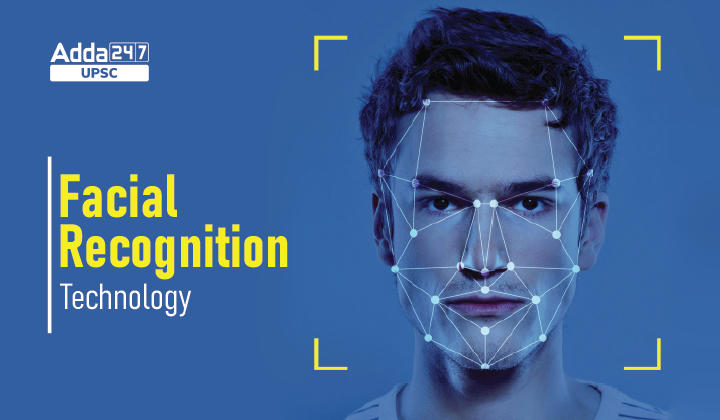Table of Contents
Facial Recognition Technology- Relevance for UPSC Exam
Science and Technology- developments and their applications and effects in everyday life.
In News
Right to Information (RTI) responses received by the Internet Freedom Foundation, a New-Delhi based digital rights organization, reveal that the Delhi Police treats matches of above 80% similarity generated by its facial recognition technology (FRT) system as positive results.
What is facial recognition?
- Facial recognition is an algorithm-based technology which creates a digital map of the face by identifying and mapping an individual’s facial features, which it then matches against the database to which it has access.
- It can be used for two purposes: first- 1:1 verification of identity wherein the facial map is obtained for the purpose of matching it against the person’s photograph on a database to authenticate their identity. For example, 1:1 verification is used to unlock phones.
- However, increasingly it is being used to provide access to any benefits or government schemes.
- Secondly, there is the 1:n identification of identity wherein the facial map is obtained from a photograph or video and then matched against the entire database to identify the person in the photograph or video.
- Law enforcement agencies such as the Delhi Police usually procure FRT for 1:n identification.
- For 1:n identification, FRT generates a probability or a match score between the suspect who is to be identified and the available database of identified criminals.
- A list of possible matches are generated on the basis of their likelihood to be the correct match with corresponding match scores.
- However, ultimately it is a human analyst who selects the final probable match from the list of matches generated by FRT. According to Internet Freedom Foundation’s Project Panoptic, which tracks the spread of FRT in India, there are at least 124 government authorised FRT projects in the country.
Why is the use of FRT harmful?
- India has seen the rapid deployment of FRT in recent years, both by the Union and State governments, without putting in place any law to regulate their use.
- The use of FRT presents two issues: issues related to misidentification due to inaccuracy of the technology and issues related to mass surveillance due to misuse of the technology.
- Extensive research into the technology has revealed that its accuracy rates fall starkly based on race and gender which can result in a false positive, where a person is misidentified as someone else, or a false negative where a person is not verified as themselves.
- Cases of a false positive result can lead to bias against the individual who has been misidentified.
- On the other hand, cases of false negative results can lead to exclusion of the individual from accessing essential schemes which may use FRT as means of providing access.
- At present, India does not have a data protection law or a FRT specific regulation to protect against misuse.
- In such a legal vacuum, there are no safeguards to ensure that authorities use FRT only for the purposes that they have been authorized to.
- FRT can enable the constant surveillance of an individual resulting in the violation of their fundamental right to privacy.
Issues to Solve
- Extensive research into FRT has revealed that its accuracy rates fall starkly based on race and gender.
- This can result in a false positive, where a person is misidentified as someone else, or a false negative where a person is not verified as themselves.
- The technology can also be used as a tool to facilitate state sponsored mass surveillance.
Way Forward
- Data is a valuable resource that should not be left unregulated and thus, the time is ripe for India to have a robust data protection regime.
- It is time that required amendments are made in the Personal Data Protection Bill, 2019 so that it ensures that it focuses on user rights with an emphasis on user privacy.
- The government would also have to respect the privacy of the citizens while strengthening the right to information.
- Technological advancement made in the last decade also needs to be addressed knowing that they have the capacity of making the law redundant.



 TSPSC Group 1 Question Paper 2024, Downl...
TSPSC Group 1 Question Paper 2024, Downl...
 TSPSC Group 1 Answer key 2024 Out, Downl...
TSPSC Group 1 Answer key 2024 Out, Downl...
 UPSC Prelims 2024 Question Paper, Downlo...
UPSC Prelims 2024 Question Paper, Downlo...
